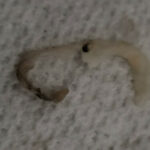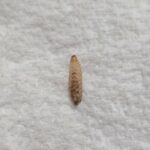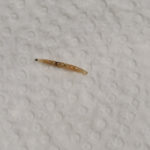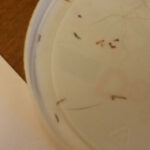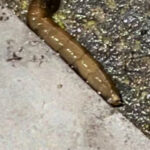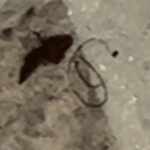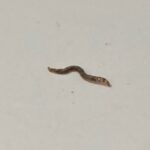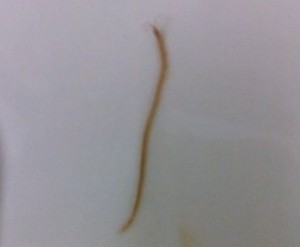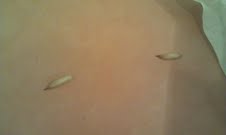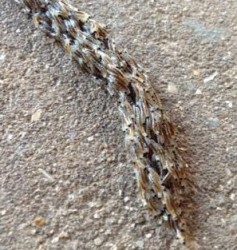
A reader wrote us a somewhat frantic email recently about what appears to be large, snake-like grouping of fungus gnat larvae. She emphasized how “gross” the gnat larvae were, an understandable reaction, and highlighted the urgency of her identification request by using two question marks. We have already answered her identification question, so we could leave the matter here, but we’ll provide a little more information about fungus gnat larvae below, as well as link to previous articles that we have written about them.
First, here is one of the pictures the reader sent in:

Although this already looks like a massive amount of larvae to be concentrated in one area, the situation is actually more dramatic. The image above shows only the first part of what is a fairly long grouping; the reader claims it is about a foot (30 centimeters) long, but it appeared even larger to us in the short video she submitted. Moreover, there were two of these gnat larvae snakes, slowly moving side-by-side.
We don’t blame our reader for being alarmed. That gnat larvae assume these configurations is peculiar and a bit uncanny, and the way all the larvae move together, with the larvae crawling over each other as the massive line moves in a straight line, is disturbing. Again, these groupings of gnat larvae can really only be likened to snakes, snakes that upon closer examination happen to be composed of hundreds or potentially even thousands of larvae moving together in dreadful harmony. The fact they look like snakes in particular may not be a defense mechanism, but their joining together certainly serves a survival purpose. They have power in numbers, you might you say, because they are so vulnerable to predation while alone.
We actually wrote somewhat extensively about fungus gnat larvae recently, and in the past we have written about groups of larvae before we had even learned of fungus gnat larvae and their bizarrely coordinated movements. We won’t dwell on what is covered in previous articles, but a couple of notes are in order to fill out the present article. First, fungus gnat larvae are not always observed in snake-like groupings, which tend to only take shape out of human sight, in decomposing organic matter in wooded areas, although they are more likely to be seen during wet years. If people see these creatures, they generally only see the adult gnats. (The larvae are often buried in soil, feeding on fungi.) Also, not every species of fungus gnat will group up like this. A few species do, like the “dark-winged fungus gnats,” but not all of them join together in this way. So, while we can’t claim that our reader saw something that is extremely rare, she did witness something that is unusual. These groupings comes out from time to time, but in general they are out of sight.
Although our reader was grossed out by what she saw, we’ll conclude by noting that there is nothing dangerous about these creatures. Individually, a gnat larvae is harmless, and banding together, though strange, doesn’t endow them with an ability to inflict harm. So, our reader has nothing to worry about, and now she has some nice photos to gross out her friends with.
All About Worms is always free, always reader-supported. Your tips via CashApp, Venmo, or Paypal are appreciated! Receipts will come from ISIPP Publishing.
You might also find these guys interesting!





